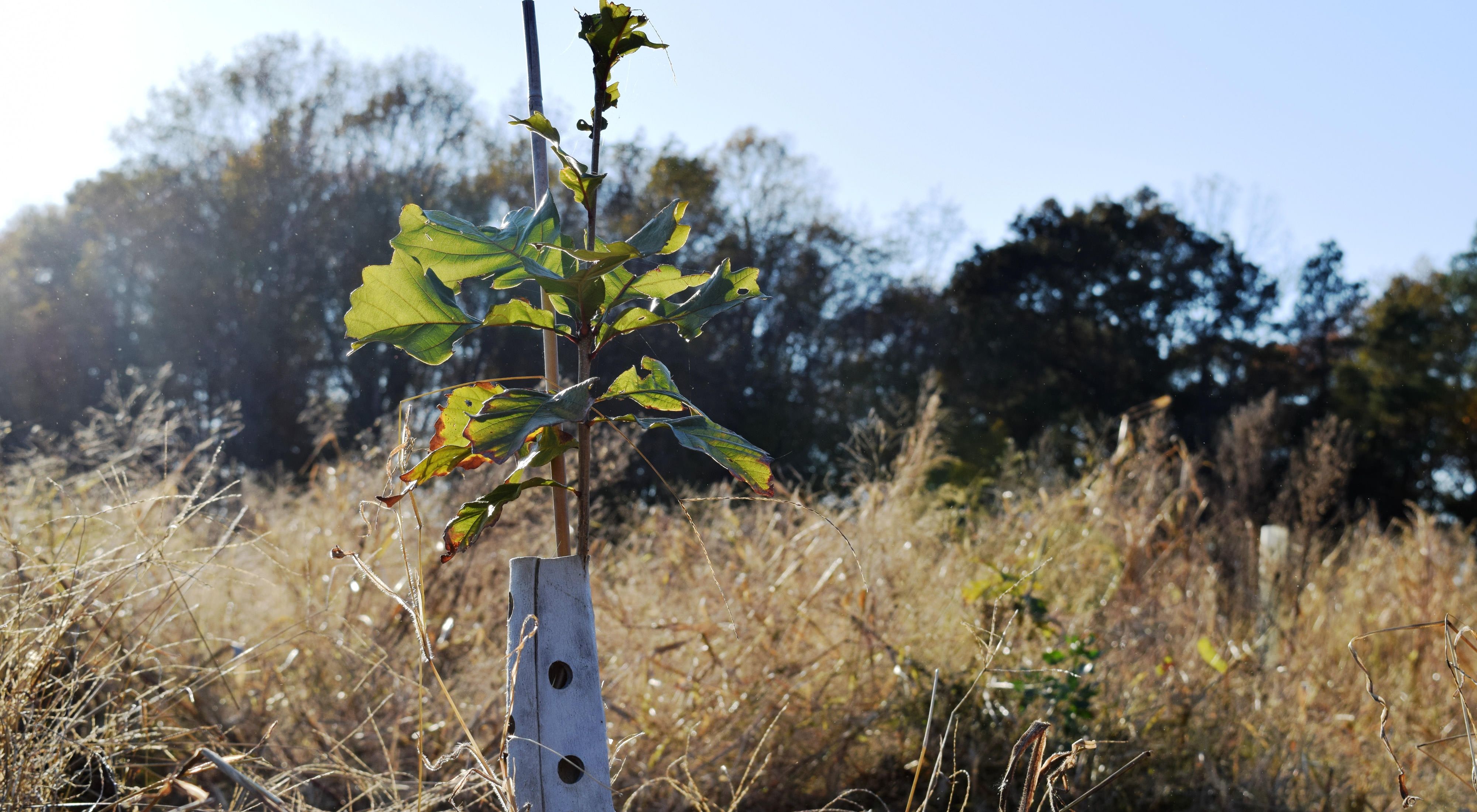The Nature Conservancy in Ohio Celebrates Creation of Statewide Tree Nursery
Bipartisan legislation funds new tree nursery to expand Ohio’s forests, wildlife habitats and improve air and water quality.
Media Contacts
-
Jen Murphy
The Nature Conservancy in Ohio
Phone: 614-370-0282
Email: jmurphy@tnc.org
Yesterday, the Ohio House of Representatives passed House Bill 101, which provides $1.6 million in FY24 and $1.25 million in FY25 to the Ohio Department of Natural Resources (ODNR) to create the Buckeye State Tree Nursery. The nursery will initially supply up to 500,000 tree seedlings annually for three years, increasing capacity thereafter, for use on public and private lands.
The following statement can be attributed in full, or in part, to Tom Rooney, sustainable forestry director for The Nature Conservancy in Ohio:
“We are delighted to see the passage of this bipartisan bill that provides crucial funding for the state to reinvest in the future of our forests. This decision comes nearly two decades after the state’s last tree nursery closed, creating a gap between the trees needed for plantings and Ohio’s tree seedling stock.”
According to research released last year (Clark et al., 2023)1, there is a nationwide shortage of seedlings coupled with a lack of species diversity in available tree planting stock, a debilitating combination that has impacted conservation efforts to replant and restore native trees throughout the state and nation. Yet conservation planning takes the long view, and forests offer the greatest opportunity for reducing pollution through natural climate solutions—land protection and management practices that lead to reduced greenhouse gas emissions and increased carbon storage.
“Due to the limited supply of tree seedlings, landowners are forced to rely on out-of-state providers with long lead times to purchase the seedlings they need. Establishing a new nursery with a variety of native species not only addresses the immediate need for more tree seedlings but also increases the ability of conservation practitioners and landowners to plant species that have the greatest chance of survival in a changing climate. Both increasing forest cover and enhancing the quality of our forests are essential to mitigating climate change. This bill helps lay the groundwork for nurturing healthy forests that will benefit future generations. In addition to their long-term impact, forests provide immediate benefits to us all, such as aiding in a strong economy, enhancing the beauty of our communities, improving air and water quality, increasing wildlife habitat and expanding recreation opportunities.”
The Nature Conservancy has worked for more than 60 years to conserve Ohio’s irreplaceable lands and waters, including protecting and managing forests in the Appalachian foothills, part of one of the oldest and most diverse forest systems found in the Midwest. To learn more about their forest protection and management efforts, visit nature.org/ohioforestry.
1 Clark, P. W., D’Amato, A. W., Palik, B. J., Woodall, C. W., Dubuque, P. A., Edge, G. J., Hartman, J. P., Fitts, L. A., Janowiak, M. K., Harris, L. B., Montgomery, R., Reinikainen, M. R., & Zimmerman, C. L. (2023, July 31). A lack of ecological diversity in forest nurseries limits the achievement of tree-planting objectives in response to global change. BioScience. https://doi.org/10.1093/biosci/biad049
The Nature Conservancy is a global conservation organization dedicated to conserving the lands and waters on which all life depends. Guided by science, we create innovative, on-the-ground solutions to our world’s toughest challenges so that nature and people can thrive together. We are tackling climate change, conserving lands, waters and oceans at an unprecedented scale, providing food and water sustainably and helping make cities more sustainable. The Nature Conservancy is working to make a lasting difference around the world in 81 countries and territories (40 by direct conservation impact and 41 through partners) through a collaborative approach that engages local communities, governments, the private sector, and other partners. To learn more, visit nature.org or follow @nature_press on X.
